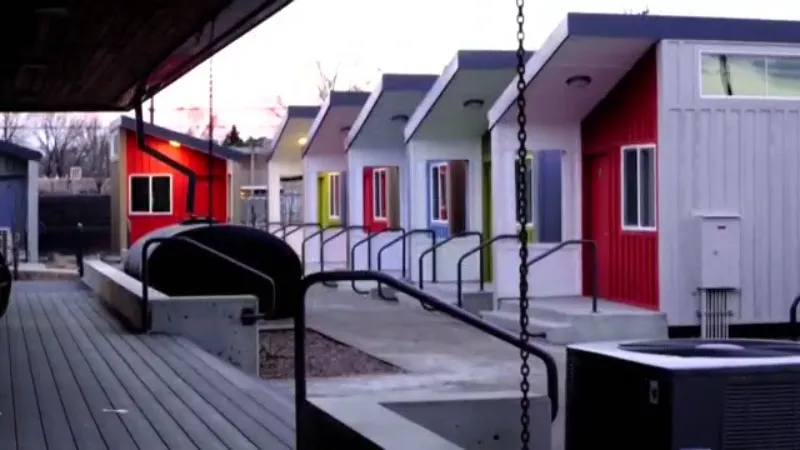Introduction: Innovative Real Estate-Based Solutions for Homelessness
In a world marked by challenges, the real estate sector is stepping up with innovative solutions to address homelessness. This article embarks on a journey through the intersection of real estate and homelessness, shedding light on creative approaches, partnerships, and technologies that are making a tangible impact on solving homelessness.
The Homelessness Challenge
Before we delve into solutions, it’s crucial to understand the magnitude of the homelessness challenge. Homelessness affects individuals and families worldwide, driven by various factors, from economic hardships to mental health issues. Recognizing the complexity of this issue is essential for finding effective solutions.
A Global Crisis: Numbers and Causes
Homelessness transcends borders—it’s a global crisis. Millions of people confront housing insecurity, and these numbers continue to rise. To tackle homelessness, it’s crucial to grasp the diverse causes and demographics of those affected.
Real Estate’s Transformative Role
Real estate isn’t just about physical structures; it has the power to transform lives. Here’s how real estate is making a difference:
Affordable Housing Initiatives
Real estate developers, government agencies, and nonprofits are collaborating to create affordable housing options that cater to different needs, including permanent supportive housing for individuals facing chronic homelessness.
Adaptive Reuse and Creative Solutions
Innovation in real estate extends to adaptive reuse and repurposing of existing structures. Abandoned buildings, hotels, shipping containers, and underutilized spaces are being ingeniously transformed into dignified and cost-effective housing units, offering a sustainable way to increase housing stock for the homeless population.
Technological Innovations
Technology is a driving force in the fight against homelessness. Here are some technological innovations that are making a difference:
Homelessness Prevention Technologies
Technological advancements such as predictive analytics, data-driven interventions, and smartphone apps are being used to identify individuals at risk of homelessness and connect them with resources and support early on, effectively reducing the risk of homelessness.
3D-Printed Housing
Innovations in 3D printing technology are revolutionizing shelter construction. 3D-printed housing units are not only cost-effective but also rapid to build, providing a potential solution for rapidly increasing housing supply for the homeless population.

Success Stories and Impact
Real-world success stories illustrate how these innovative approaches are making a tangible impact on ending homelessness. These cases showcase the power of creativity, collaboration, and technology:
Case Study 1: Housing First Approach
The Housing First approach, which prioritizes providing stable housing to individuals experiencing homelessness, has shown remarkable success. Cities like Helsinki, Finland, have virtually eradicated street homelessness by adopting this approach, demonstrating that housing is the first step towards rebuilding lives.
Case Study 2: Homelessness Prevention Apps
Mobile apps designed to prevent homelessness are making an impact in cities like London, UK. These apps connect individuals in need with available resources and support services, effectively reducing the risk of homelessness.
Collaborative Partnerships
Addressing homelessness requires collaboration among various stakeholders. Governments, nonprofits, real estate developers, and communities must work together to create sustainable solutions. Here’s how partnerships can drive progress:
Government Initiatives
Government agencies can provide funding, policy support, and land for affordable housing projects. By prioritizing homelessness prevention and housing-first policies, governments can set the stage for meaningful change.
Nonprofit Organizations
Nonprofits play a vital role in service provision and advocacy. They can partner with real estate developers to create supportive housing and offer wraparound services that address the complex needs of homeless individuals and families.
Corporate Social Responsibility
Companies can contribute to homelessness solutions through their corporate social responsibility initiatives. By investing in affordable housing projects and community engagement, corporations can make a positive impact in their local communities.
Conclusion: A World Without Homelessness
In conclusion, innovative real estate-based solutions are turning the tide in the battle against homelessness. By embracing creativity, compassion, and collaboration, we have the potential to create a world where everyone has access to safe, stable housing—a world without homelessness.
Real estate developers, government agencies, nonprofits, and communities all have a role to play in this critical mission. Together, we can redefine what it means to have a place to call home and make homelessness a solvable problem. It’s time to build a world where everyone can look forward to a brighter, more secure future.












